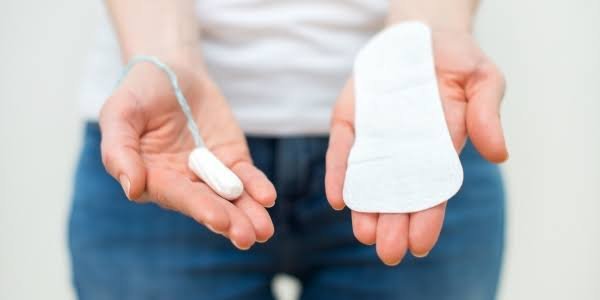There is a major issue of this nature for people across the country and that is enough amounts of sanitation products for use. On the contrary, reproductive inequality results not only in the undermining of women’s health status but adds up to psychological damage and a decline in social self-esteem as well. In this blog, we will go further to alternative ways of dealing with Period Poverty in Canada. Its influence cuts across the board irrespective of age, race, or the most affluent parties. It has far more consequences than just affecting people’s physical appearance and ultimately causes divisions. By using this action and looking for medical reform, we can indicate the menstrual equity availability for everyone in Canada.
Understanding Period Poverty
Reasons for Period Poverty in Canada:
Period poverty in Canada follows the course of the most complex tracing. This purpose is the first lack of accessibility of the affordable sanitary products supply. Besides, a scarcity of money puts people in the position of not being able to afford basic needs. Moreover, many aspects of menstrual hygiene and education problems are not that popular.
Effect on people, families, and the community:
The scope of this issue is so substantial that people, their families, and communities can end up suffering from various kinds of health problems and stay outside of the circle of their daily routines. And, it may also worsen (existing) inequalities, including gender and socioeconomic gaps. And, it may also worsen (existing) inequalities, including gender and socioeconomic gaps.
Intersection of other Forms of Discrimination:
Moreover, menstrual equity crosses class divides, indigenous rights, homelessness, and disabled rights. These barriers affect the socially disadvantaged.
Current Initiatives and Challenges
The Present Institutional Support and Non-profits Tackling Period Poverty:
Additionally, among the different programs and organizations designed to address period poverty in Canada, there are NGOs, charities, and government-funded initiatives. These initiatives aim at providing free or subsidized menstrual products.
Challenges Encountered while Tackling the Problem Effectively:
Nevertheless, some hurdles are yet to be crossed, such as the shortage of funds for menstrual health programs, the lower levels of knowledge about menstrual health in general, and the stigma that is still attached to the topic that discourages people from talking openly and advocating.
Strategies for Change
Policy Promotion of Menstrual Equity:
On the other hand, policy advocacy initiatives ask for laws that make free menstrual products accessible, as well as for the integration of menstrual health education in school curriculums.
Community interventions as the trusted approach and support network:
Community-based interventions involve various initiatives aimed at addressing period poverty. These initiatives include distributing halla cloth, raising awareness, and establishing spaces for girls and mothers to interact. Through these efforts, the goal is to make the unseen deed of addressing period poverty a visible act.
Education and Awareness Campaigns:
Educational campaigns assist in removing menstruation taboos, increasing awareness about poverty in periods, and supplying detailed information on menstruation hygiene.
Collaborative Efforts and Partnerships
Collaboration between Government and NGO’s, and Local Communities:
Combining government with NGOs and communities as the main agents to fight period poverty calls for effectiveness. Partnerships are developed to design and apply policies and programs, share resources and knowledge, and raise the need for changes in systems.
Importance of Grassroots Initiatives and Community Involvement:
Community-based initiatives and people’s direct participation in making change appear to be among the factors that help individuals fight for their rights and betterment as well as affirm the availability of menstrual health-related.
Dealing with stigma and cultural preconceptions.
Taboo Breaking – Menstruation by Opening up Dialogue
Forming forums for open dialogues, while criticizing harmful prejudices, and encouraging empowering depictions of menstruation in public media, are important means of overcoming obstacles and establishing connections.
Tackling Cultural Taboos and Misleading Notions
It is as critical to tackle the cultural hang-ups and misconceptions behind period poverty. Moreover, the endeavor to instruct and educate about menstruation by enlightening people with more information and knowledge recognition is inevitable.
Availability of menstrual products.
Need for Affordable and Available for All Menstrual Products
Establishing low-priced and easily available pads, tampons and other goods necessary to maintain proper hygiene alleviates period poverty and creates menstrual equity.
Introducing Sustainable Strategies to Overcome the Permanent Access Obstacle:
For the long-term available, sustainability requires infrastructure development and a network of supply through effective and responsible consumption, which are some of the critical issues that must be tackled.
Conclusion
Combating period poverty in Canada requires an overall strategy that accepts the diversity of the problem and sees the challenges that it brings. Today’s strategy has to deal with problems, for example, insufficient finances and stereotypes. Challenges as well as solutions, need interventions through policy advocacy, community focus, and education. If you’re interested in learning more about period poverty in Canada and ways to take action, visit here for related posts highlighting the impactful work being done by non-profit organizations across the country.
Moreover, non-profit organizations both at the grassroots levels and across the nation carry out period poverty initiatives by way of amazing projects. Further close collaboration with local government, NGOs, and community organizations is indispensable. Besides that, these programs have the potential to reduce the cycling barriers such as language and culture. Subsidizing menstrual items for lower-income people and developing sustainable approaches are the important steps ahead.


